Spatiotemporal Distribution and Influencing Factors of the Net Primary Productivity in the Datai Mine in Western Beijing
Abstract
:1. Introduction
2. Material and Method
2.1. Selection of Study Area and Contrast Area
2.2. General Situation of Datai Mine
2.3. Datasets
- (1)
- Meteorological data mainly include sunshine duration, precipitation, average temperature, and other data, which are all from the data provided by the Institute of Geographic Science and Natural Resources Research. Based on the commonly used processing methods, first, the data of 15 meteorological stations in the Datai Mine study area and its surrounding areas in the Mentougou District were selected, and the invalid values were deleted from the temperature and precipitation data. Then, we used a software program to calculate the solar radiation data, based on the Angstrom–Prescott equation (Zuo et al., 1963). Finally, ArcGIS was used to process the mask and resolution of the study area, and then the meteorological grid data (30 m) from 2013 to 2021 were obtained.
- (2)
- A vegetation-type map was derived from the remote sensing monitoring data of the Geo-Science Data Network. Firstly, we used the ArcGIS program’s raster projection for remote sensing images, to ensure that the spatial range and projection type of the output image is consistent with the file of the study area. Secondly, the spatial analysis of the data and the background value of the file were also carried out. Finally, the resulting data were converted into a file format consistent with that of the meteorological data.
- (3)
- The NDVI data were derived from the geographic data cloud platform. We selected Landsat TM products within the study area with a spatial resolution of 30 m. First of all, it is necessary to carry out the radiometric calibration and atmospheric correction of the NDVI; then, use the formula calculate the NDVI and extract by mask with the study area; finally, a file with the meteorological data was generated. The results images are shown in Figure 3a,b.
2.4. Calculation of Net Primary Productivity
2.5. Trend Analysis of NPP
2.6. Correlation Analysis of NPP and Meteorological Factors
2.7. Fitting Relationship between NPP and Meteorological Factors
- (1)
- The Boltzmann fitting of the NPP and temperature (T):
- (2)
- The Gaussian fitting of the NPP and precipitation (P):
- (3)
- The Gaussian fitting of the NPP and radiation (R):
3. Result and Analysis
3.1. The Analysis of Time Series Variation Characteristics of NPP in the Study Area
3.1.1. The Monthly Variation Characteristics of NPP of Vegetation in the Study Area
3.1.2. The Annual Characteristics of NPP of Vegetation in the Study Area
3.2. Spatial Variation Characteristics of Vegetation NPP in the Mentougou District
3.3. Analysis of Meteorological Driving Factors of Vegetation NPP in the Datai Mine Study Area
3.3.1. Temporal Analysis of Vegetation NPP and Meteorological Factors in the Study Area of Datai Mine
- (1)
- The relationship between vegetation NPP and temperature (T)
- (2)
- The relationship between NPP of vegetation and precipitation (P)
- (3)
- Relationship between vegetation NPP and solar radiation (R)
3.3.2. Multivariate Analysis of Vegetation NPP and Meteorological and Mining Factors in the Mentougou District
3.3.3. Spatial Analysis of Vegetation NPP and Meteorological Factors in the Mentougou District
4. Discussion
5. Conclusions
- (1)
- We analyzed the data and found that the vegetation carbon sequestration capacity in the research area of the Datai Mine changed at a consistent and gradual annual rate; in addition, it was revealed that the NPP of vegetation in the Datai Mine study area covered an annual cycle and gradually increased first, then rapidly increased, reaching a peak value, and then sharply to slowly decreased.
- (2)
- The results showed that the changing trend of the NPP value of vegetation in the study area and the comparison area of the Datai Mine was consistent, which confirmed that under the low-intensity mining conditions of the Datai Mine, mining operations had no significant impact on the carbon sequestration of vegetation. This conclusion is applicable to low-intensity mining areas with a similar topographic environment, vegetation characteristics, and climatic conditions.
- (3)
- Based on the observation data of the Datai Meteorological Station, the fitting relationship and variation gradient of the temperature, precipitation, solar radiation, and vegetation NPP in the study area were analyzed and obtained. When the temperature was 17.6 °C, the precipitation was 101.08 mm, and the solar radiation was 509.8 MJ/m2, the vegetation NPP reached its maximum value. Further studies are needed to analyze the comprehensive impact of these multiple factors on the NPP.
- (4)
- Among the meteorological factors that affect the change of NPP in Mentougou area, the correlation with NPP is from large to small for precipitation, temperature and solar radiation. Precipitation was the main meteorological factor that affected the change in the NPP.
- (5)
- There are still some deficiencies in this study that need to be improved. First, when acquiring the data from the meteorological station, a few meteorological observation stations had missing data for some daily periods. Therefore, we used the data from the adjacent meteorological stations to supplement (such as the daily temperature or precipitation). Second, the factors influencing the vegetation NPP are not only environmental factors but also vegetation characteristics and human activities, which affect the changes in the vegetation NPP. Additionally, further studies should also combine the coal output, ground surface settlement, and some mining elements in their analysis. Moreover, the fluctuation of NPP in coal mines is affected by climate change, the results of recovery projects and mining factors. Meanwhile, the process of restoration projects and the influence of mining factors have no obvious regularity. Thus, combined with climatic factors, it is hard to distinguish which area is dominated by these different impact factors. In future research, we will build an integrated computational model of the coal mining NPP based on meteorological and mining elements to analyze the impact of these various factors on the NPP.
Author Contributions
Funding
Institutional Review Board Statement
Informed Consent Statement
Data Availability Statement
Conflicts of Interest
References
- Xing, F.; Lu, L.; Yuanyuan, Q.; Xiang, G. The path and enlightenment of major developed economies from carbon peaking to carbon neutralization. Res. Prog. Clim. Chang. 2022, 1–17. [Google Scholar]
- Chaitra, A.; Upgupta, S.; Bhatta, L.D.; Mathangi, J.; Anitha, D.S.; Sindhu, K.; Kumar, V.; Agrawal, N.K.; Murthy, M.S.R.; Qamar, F.; et al. Impact of Climate Change on Vegetation Distribution and Net Primary Productivity of Forests of Himalayan River Basins: Brahmaputra, Koshi and Indus. Am. J. Clim. Chang. 2018, 7, 271–294. [Google Scholar] [CrossRef] [Green Version]
- Ouyang, X.J.; Dong, X.; Wei, R.; Gong, C.; Wu, H. Spatial and temporal changes of NDVI during vegetation growth season on the Qinghai Tibet Plateau and its response to climate factors. Res. Water Soil Conserv. 2022, 30, 1–10. [Google Scholar]
- Zheng, J.; Fang, X.; Wu, S. Frontier Progress in Climate Change Research in China’s Physical Geography. Prog. Geogr. Sci. 2018, 37, 16–27. [Google Scholar]
- Jiao, K.; Gao, J.; Wu, S.; Hou, W. Research progress on the response process of vegetation activities to climate change. J. Ecol. 2018, 38, 2229–2238. [Google Scholar]
- Bayarsaikhan, S.; Mandakh, U.; Dorjsuren, A.; Batsaikhan, B.; Bao, Y.; Adiya, Z.; Myagmartseren, P. Variations of vegetation net primary productivity and its responses to climate change from 1982 to 2015 in Mongolia. ISPRS Ann. Photogramm. Remote Sens. Spat. Inf. Sci. 2020, 3, 347–353. [Google Scholar] [CrossRef]
- Mu, H.; An, S.; Chen, Y.; Xu, Y. Research on the carbon sequestration and oxygen release capacity of vegetation in coal mine subsidence reclamation area. Shaanxi Coal 2021, 40, 37–41+50. [Google Scholar]
- Zhang, M.; Guo Tao, L.K.; Huang, P.; Yu, J.; Liu, S.; Liu, Y.; Li, Y. Remote sensing estimation of rice LAI based on hyperspectral vegetation index. J. Southwest Agric. 2022, 1–10. Available online: http://kns.cnki.net/kcms/detail/51.1213.S.20220926.1605.062.html (accessed on 18 November 2022).
- Zhang, Q.; Lv, W.; Xu, B. Research on the measurement of carbon sequestration capacity of urban green spaces in North China. Environ. Sci. 2021, 47, 41–48. [Google Scholar]
- Falahatkar, S.; Hosseini, S.M.; Mahiny, A.S.; Ayoubi, S.; Wang, S.-Q. Soil organic carbon stock as affected by land use/cover changes in the humid region of northern Iran. J. Mt. Sci. 2014, 11, 507–518. [Google Scholar] [CrossRef]
- Chen, K.; Wang, J.; He, Y.; Zhang, L. Assessment of forest carbon storage and carbon sequestration potential in key state-owned forest areas in Daxing’anling, Heilongjiang. J. Ecol. Environ. 2022, 31, 1–10. [Google Scholar]
- Li, H.; Du, J.; Tang, H. Estimation of soil organic carbon density and storage in counties based on random forests. China Soil Fertil. 2021, 3, 1–8. [Google Scholar]
- Li, Z.; Wang, X.; Xu, Y.; Wen, L.; Huang, L. Changes in net primary productivity of vegetation in Shangri La in northwest Yunnan from 1996 to 2015. J. Ecol. 2022, 42, 266–276. [Google Scholar]
- Field, C.B. Global net primary production: Combining ecology and remote sensing. Remote Sens. Environ. 1995, 51, 74–88. [Google Scholar] [CrossRef] [Green Version]
- Guoa, E.; Liu, X.; Zhang, J.; Wang, Y.; Wang, C.; Wang, R.; Lia, D. Assessing spatiotemporal variation of drought and its impact on maize yield in Northeast China. J. Hydrol. 2017, 553, 231–247. [Google Scholar] [CrossRef]
- Zhu, W. Research on Remote Sensing Estimation of Net Primary Productivity of Vegetation in Terrestrial Ecosystems in China and Its Relationship with Climate Change; Beijing Normal University: Beijing, China, 2005. [Google Scholar]
- Chena, Y.; Kelly, R.; Genet, H.; Lara, M.J.; Chipman, M.L.; McGuire, A.D.; Hu, F.S. Resilience and sensitivity of ecosystem carbon stocks to fire-regime change in Alaskan tundra. Sci. Total Environ. 2021, 806, 151482. [Google Scholar] [CrossRef]
- Running, S.W.; Coughlan, J.C. A general model of forest ecosystem process for regional applications I. Hydrologic balance, canopy gas exchange and primary production process. Ecol. Model. 1988, 42, 125–154. [Google Scholar] [CrossRef]
- Zhao, M.; Running, S.W.; Heinsch, F.A.; Nemani, R. MODIS-Derived Terrestrial Primary Production; Springer: Berlin/Heidelberg, Germany, 2011; Chapter 28; pp. 635–660. [Google Scholar]
- Liu, Q.; Zhang, T.; Du, M.; Gao, H.; Zhang, Q.; Sun, R. A better carbon-water flux simulation in multiple vegetation types by data assimilation. For. Ecosyst. 2022, 9, 100013. [Google Scholar] [CrossRef]
- Shan, N.; Zhang, Y.; Chen, J.M.; Ju, W.; Migliavacca, M.; Peñuelas, J.; Yang, X.; Zhang, Z.; Nelson, J.A.; Goulas, Y. A model for estimating transpiration from remotely sensed solar-induced chlorophyll fluorescence. Remote Sens. Environ. 2021, 252, 112134. [Google Scholar] [CrossRef]
- Pu, S.; Fang, J. Net primary productivity of vegetation on the Qinghai-Tibet Plateau and its temporal and spatial changes from 1982 to 1999. J. Nat. Resour. 2002, 17, 8. [Google Scholar]
- Wei, W.; Hou, Y.; Peng, S.; Chen, P.; Liang, X.; Zhang, J. Effects of different light intensities on the growth and biomass allocation of invasive plants Mikania micrantha and Chromolaena odorata. J. Ecol. 2017, 37, 6021–6602. [Google Scholar]
- Pan, J.H.; Huang, K.J.; Li, Z. Temporal and spatial variation of net primary productivity of vegetation in Shule River Basin from 2001 to 2010 and its relationship with climate factors. Chin. J. Ecol. 2017, 37, 12. [Google Scholar]
- Liu, F.; Zeng, Y.G. Changes in temporal and spatial pattern of vegetation NPP in Qinghai Plateau in recent 16 years and the influence of climate and human factors. Chin. J. Ecol. 2019, 39, 1528–1540. [Google Scholar]
- Zhou, X.; Zhu, W.; Ma, G.; Zhang, D.; Zheng, Z. Remote Sensing Assessment of Net Primary Productivity Loss of Vegetation Caused by Rare Earth Mining–Taking Ganzhou City, Jiangxi Province as an Example. Remote Sens. Technol. Appl. 2016, 31, 307–315. [Google Scholar]
- Xiang, Y.; Li, J.; Chen, H. Research on vegetation NPP changes in Shendong mining area based on CASA model. Hubei Agric. Sci. 2017, 56, 5. [Google Scholar]
- Zhu, W.; Pan, Y.; Hu, H.; Li, J.; Gong, P. Estimation of regional terrestrial vegetation NPP based on GIS and RS—Taking Inner Mongolia, China as an example. J. Remote Sens. 2005, 009, 300–307. [Google Scholar]
- Chen, J.M.; Chen, X.; Ju, W. Effects of vegetation heterogeneity and surface topography on spatial scaling of net primary productivity. Biogeosciences 2013, 10, 4879–4896. [Google Scholar] [CrossRef]
- Fujun, C.; Yanjun, S.; Qian, L.; Ying, G.; Limei, X. Research on the Spatial and Temporal Changes of NPP in China’s Terrestrial Ecosystem in Recent 30 Years. Geoscience 2011, 31, 1409–1414. [Google Scholar]
- Yang, H.; Zhou, W.; Shi, P.Q.; Huang, L. Spatial and temporal change pattern of grassland NPP in Inner Mongolia and its coupling relationship with hydrothermal factors. Res. Water Soil Conserv. 2019, 26, 234–240. [Google Scholar]
- Hong, L.; Shen, Y.; Ma, H.; Zhang, P.; Huo, X.; Wen, H. Temporal and spatial changes of net primary productivity of vegetation in Ningxia from 2000 to 2019 and its driving factors. Chin. J. Appl. Ecol. 2022, 33, 1–10. [Google Scholar]
- Yi, W.; Cong, Z.; Li, Z.; Liqin, D.; Kun, Z. Temporal and spatial dynamic changes of net primary productivity of vegetation in Ruoergai Plateau from 2000 to 2019 and its relationship with climate factors. J. Southwest For. Univ. (Nat. Sci.) 2022, 42, 52–61. [Google Scholar]
- Wang, J.; Wu, M. Spatial and temporal changes of primary productivity of vegetation in Mentougou District, Beijing, 2003–2014. J. East China Norm. Univ. 2018, 2018, 163–170. [Google Scholar]
- Liu, F.; Chi, Y.; Wang, Z.; Wang, Y. Analysis on the potential of NPP included in the ecological statistical indicator system—Taking NPP measurement and spatial analysis in Beijing as an example. J. Ecol. Environ. 2009, 18, 960–966. [Google Scholar]
- Cheng, F.; Liu, S.; Zhang, Y.; Yin, Y.; Hou, X. The impact of land use change on net primary productivity in Beijing based on MODIS sequence. J. Ecol. 2017, 37, 5924–5934. [Google Scholar]
- Su, W.; Yu, X.; Lu, X.; Fan, J.; Zhang, Y. Research on the impact of climate change on NPP of North China Larch Forest in Beijing Mountain Area. Guangdong Agric. Sci. 2012, 39, 69–72. [Google Scholar]
- Ma, B.; Jing, J.; Xu, Y.; He, H.; Liu, B. Study on the temporal and spatial changes of vegetation NPP in karst areas of Yunnan, Guizhou and Guangxi from 2000 to 2019 and its relationship with climate change. J. Ecol. Environ. 2021, 30, 2285–2293. [Google Scholar]
- Zhou, J.; He, Z.; Zhang, Z.; Chen, L. Analysis of the relationship between the spatial and temporal pattern of vegetation NPP and meteorological factors. Geospat. Inf. 2018, 16, 25–28+31+10. [Google Scholar]
- Xie, S.; Liu, Y.; Yao, F. Spatial and temporal change of NDVI in Beijing from 1998 to 2015 and its response to climate factors. Res. Water Soil Conserv. 2020, 27, 190–196+202+2. [Google Scholar]
- Liu, Z.; Chen, J. Correlation between spatial and temporal changes of vegetation and climate factors in Beijing. Geol. Bull. 2021, 40, 2159–2166. [Google Scholar]
- Mu, S.; You, Y.; Zhu, C.; Zhou, K. Temporal and spatial pattern of grassland vegetation precipitation utilization efficiency in northwest China. J. Ecol. 2017, 37, 1458–1471. [Google Scholar]
- Guo, L.; Hao, C.; Wu, S.; Zhao, D.; Gao, J. CENTRY simulation study on the change characteristics of grassland NPP in Inner Mongolia and its sensitivity to climate change. Geogr. Res. 2016, 35, 271–284. [Google Scholar]
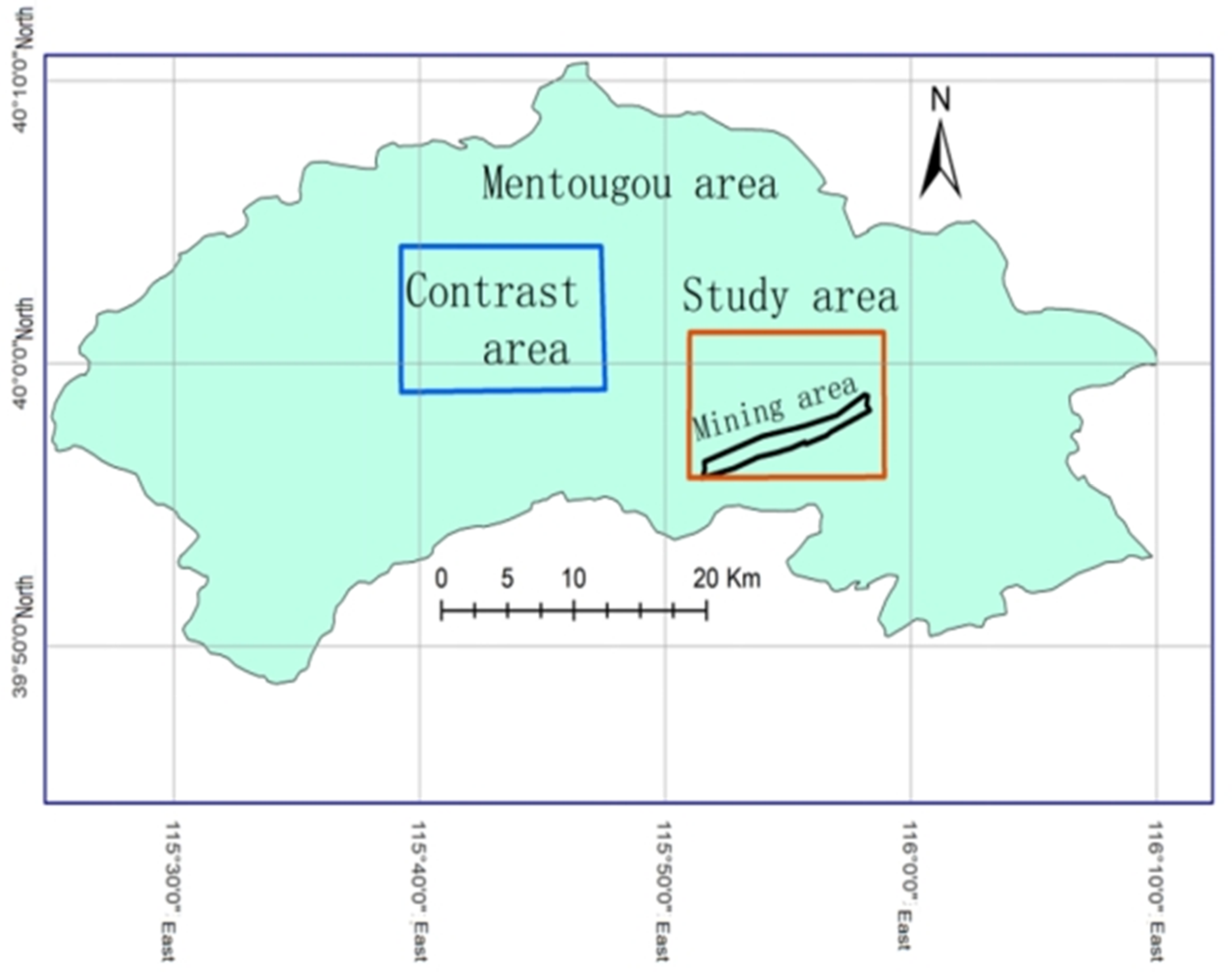


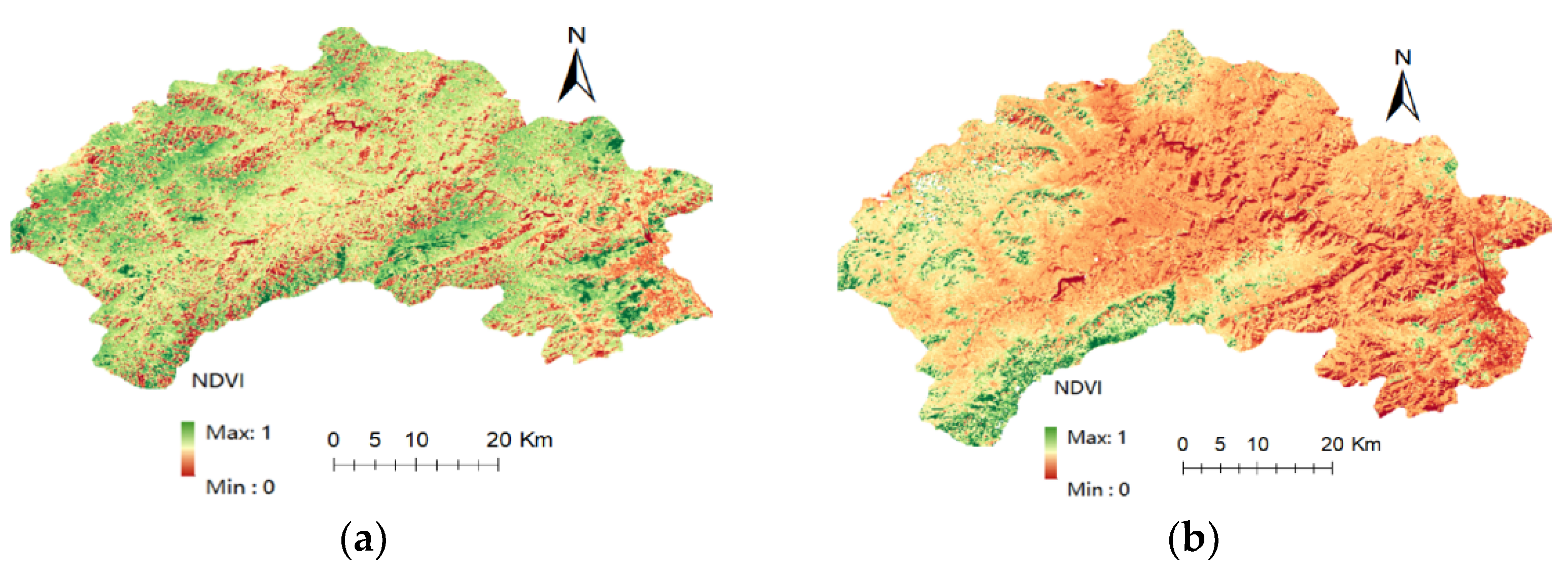
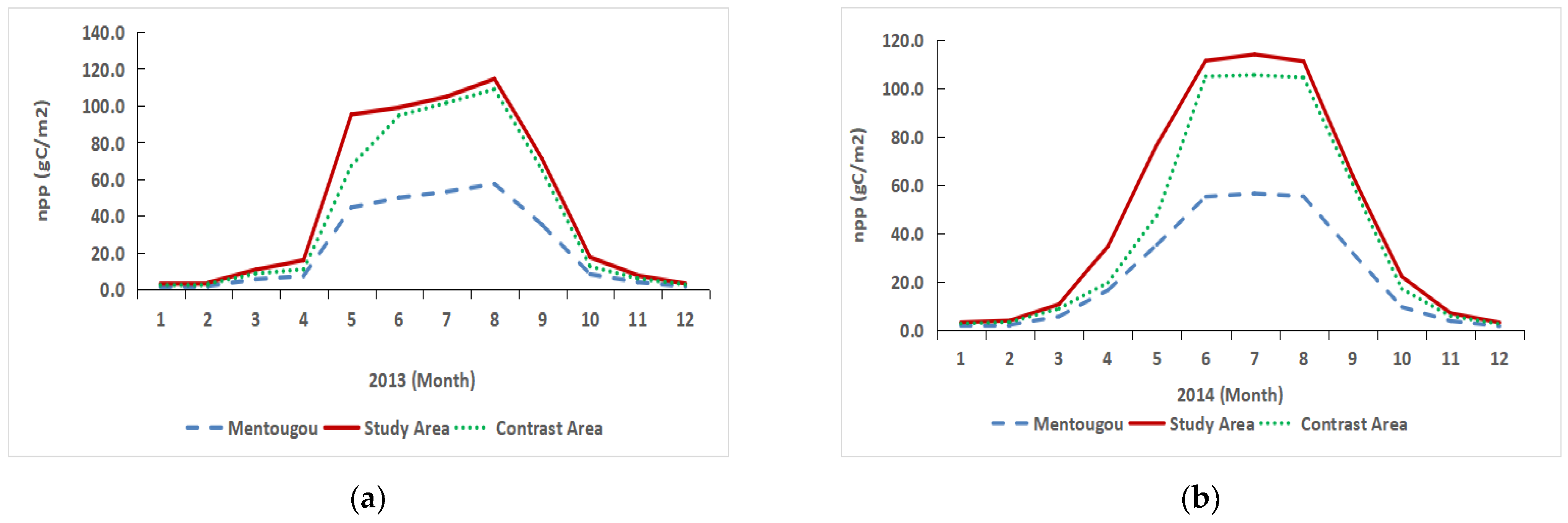
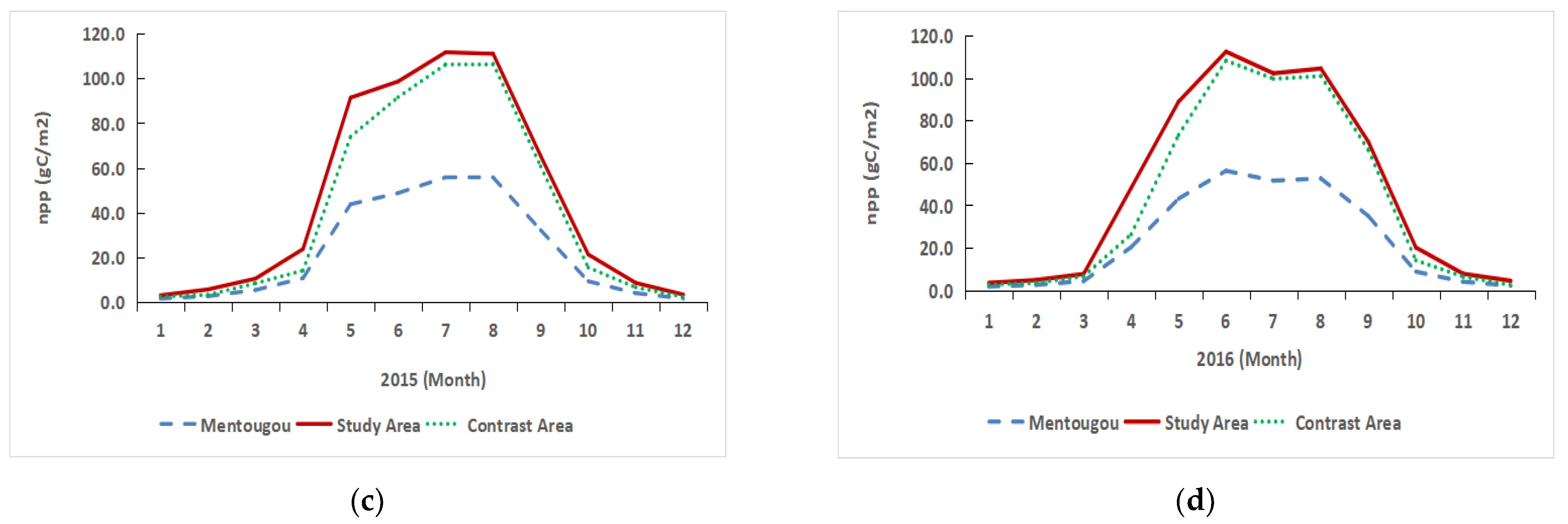
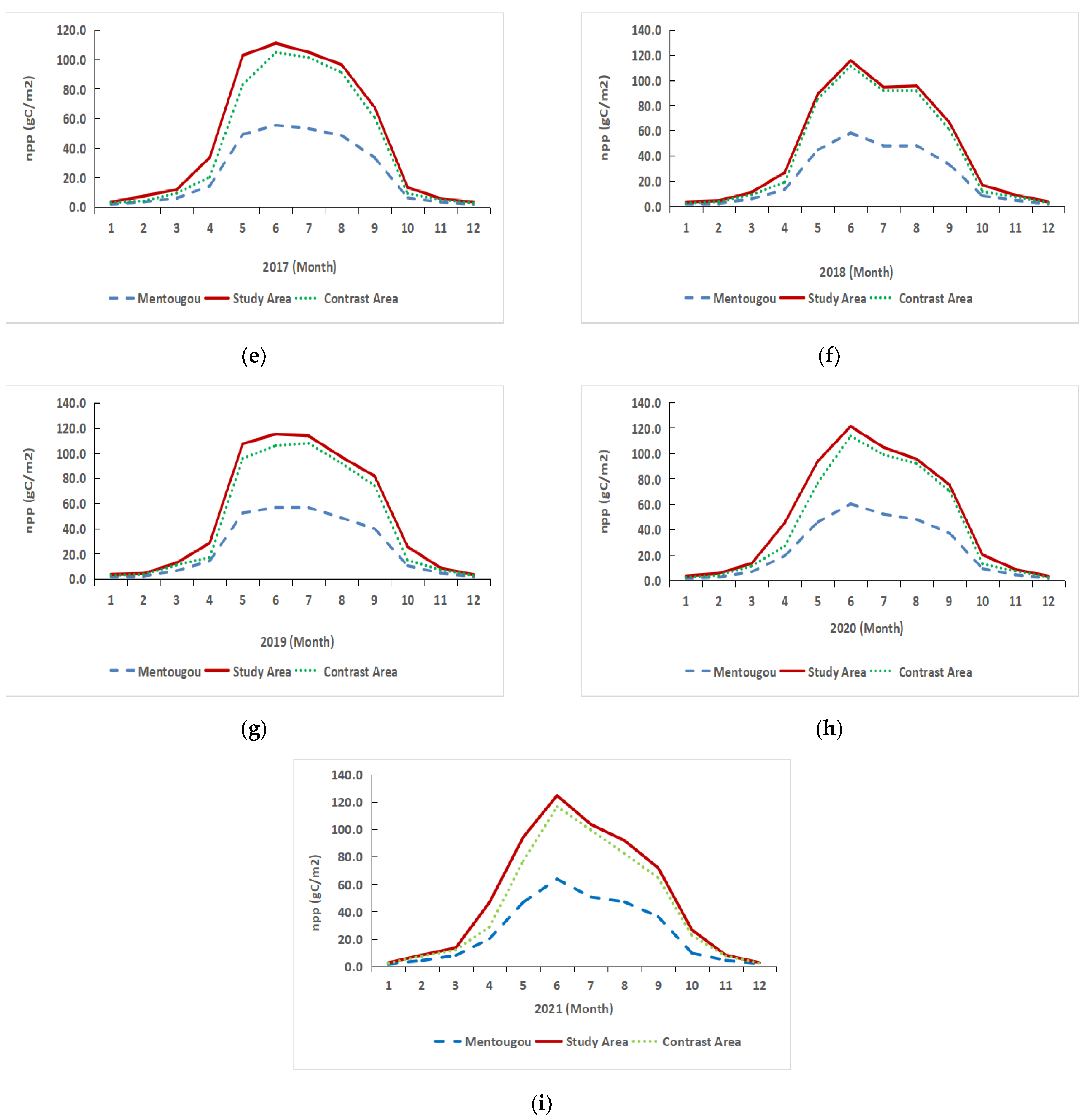



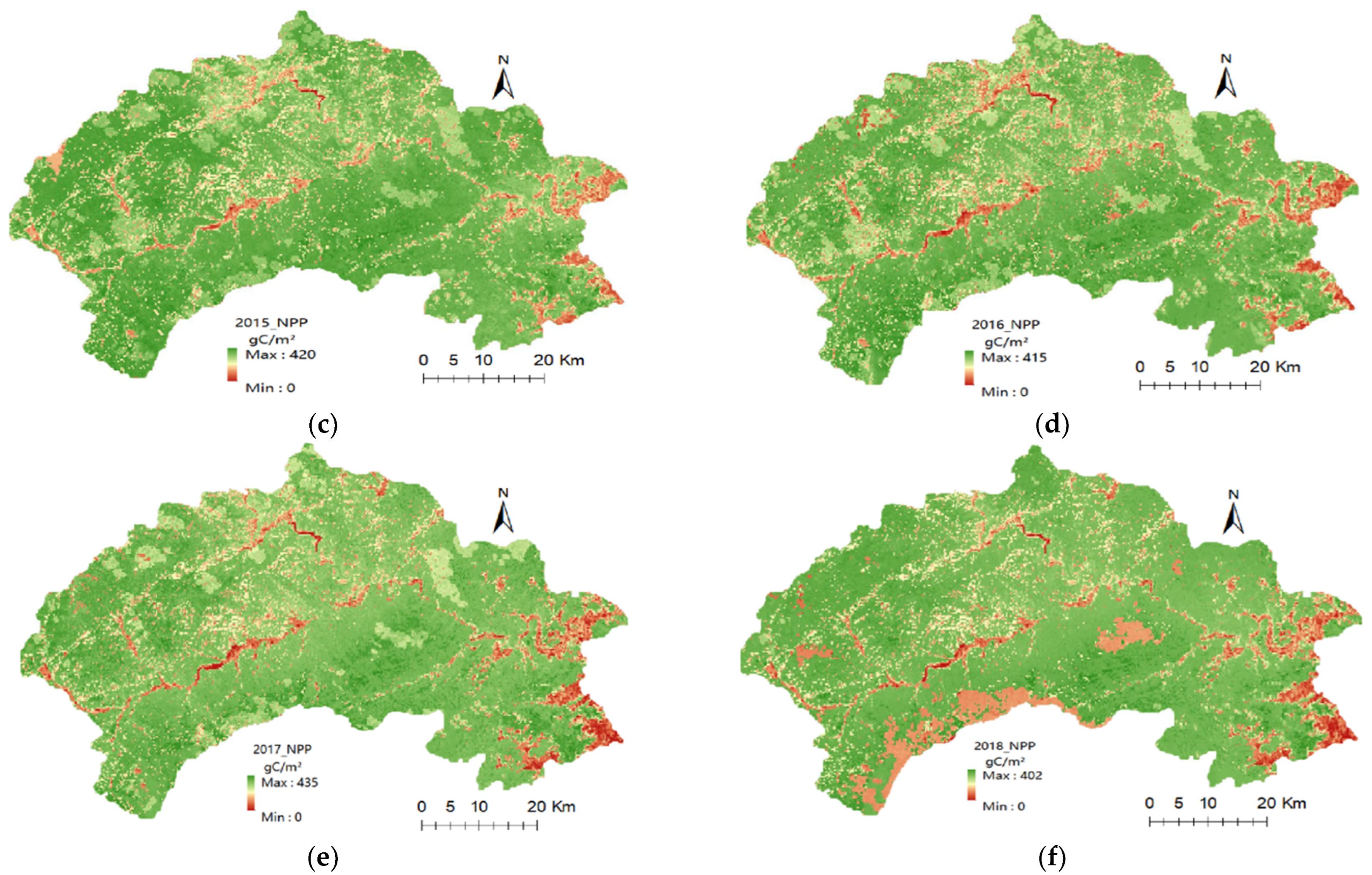

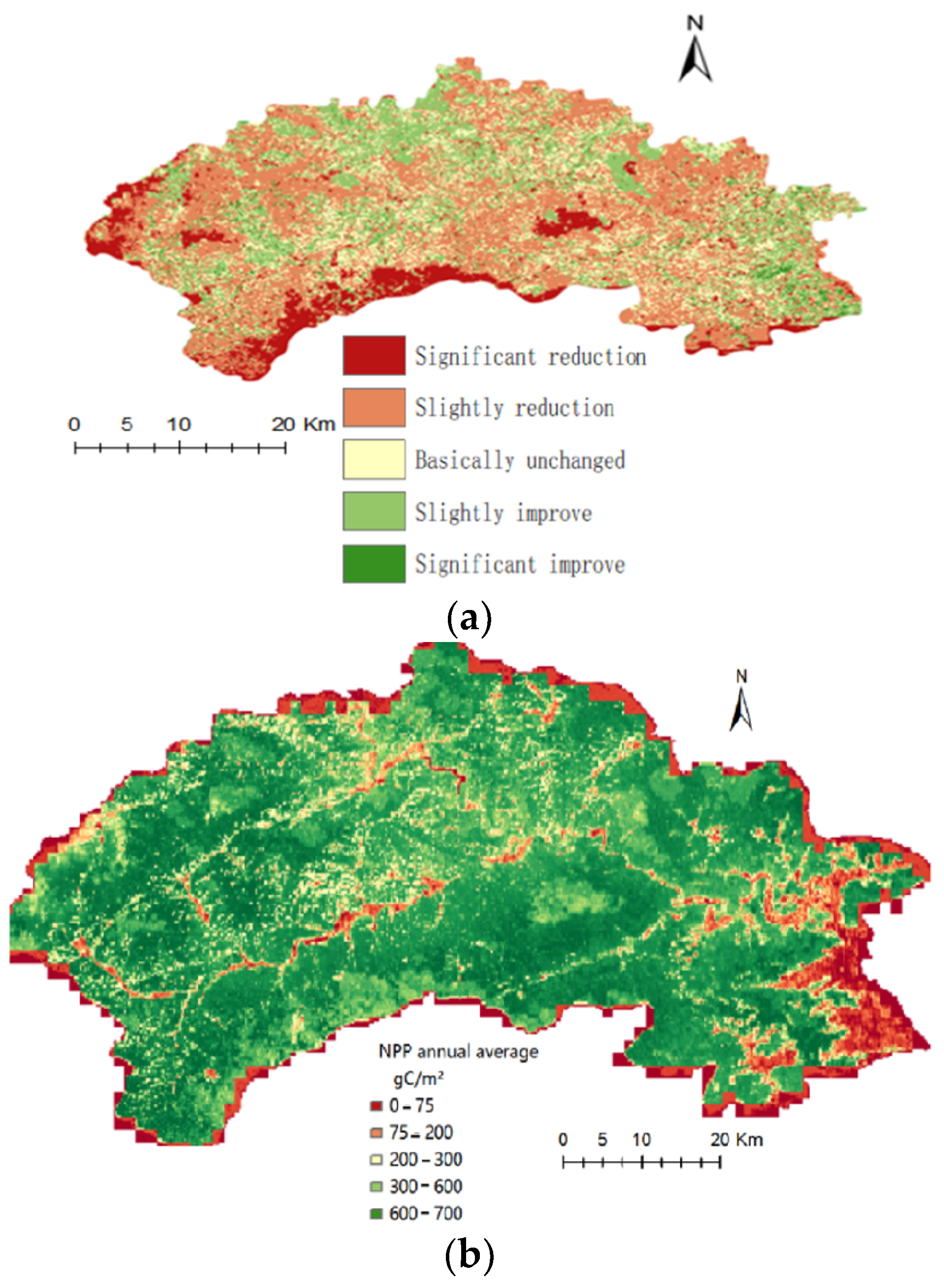
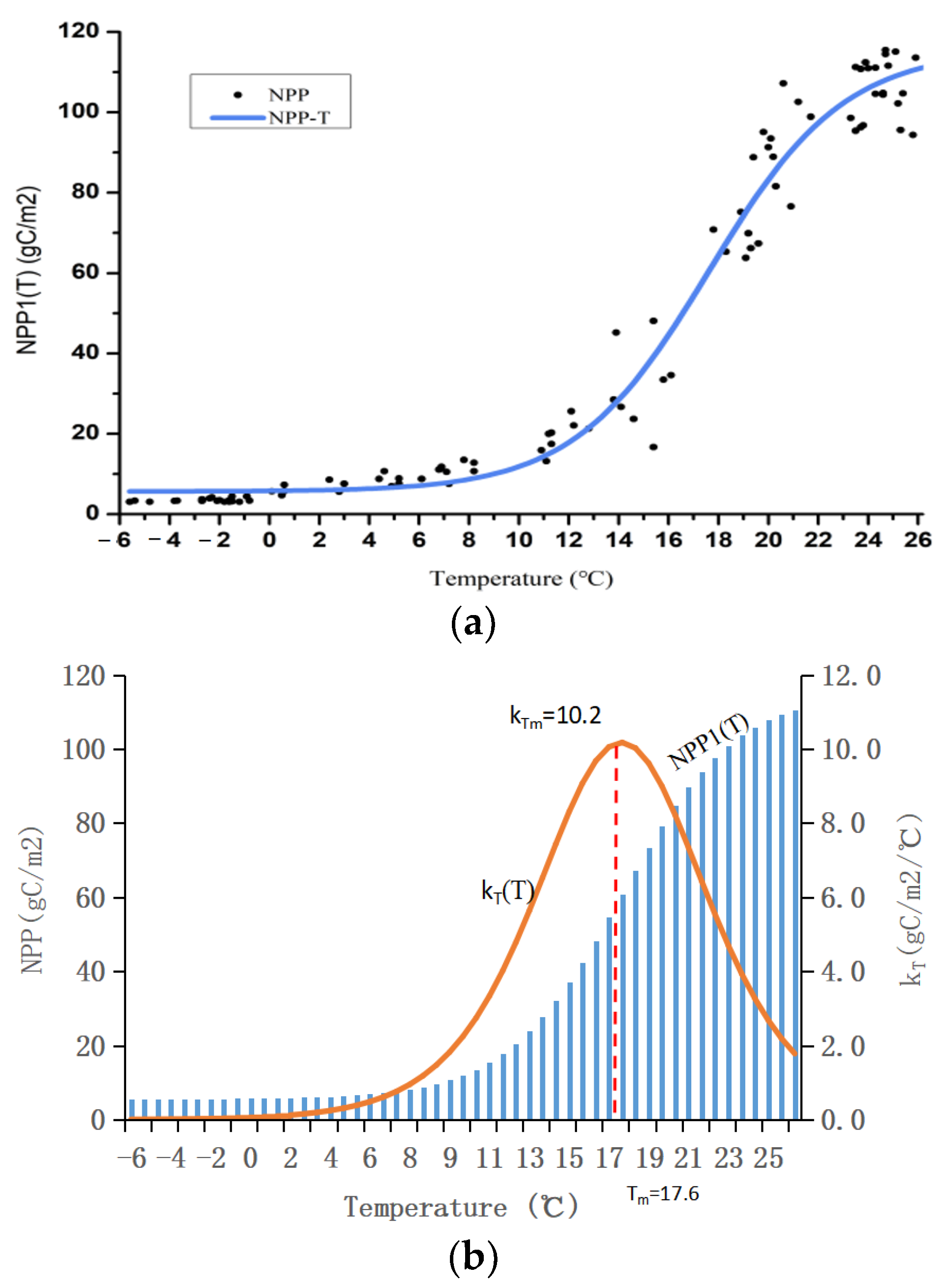
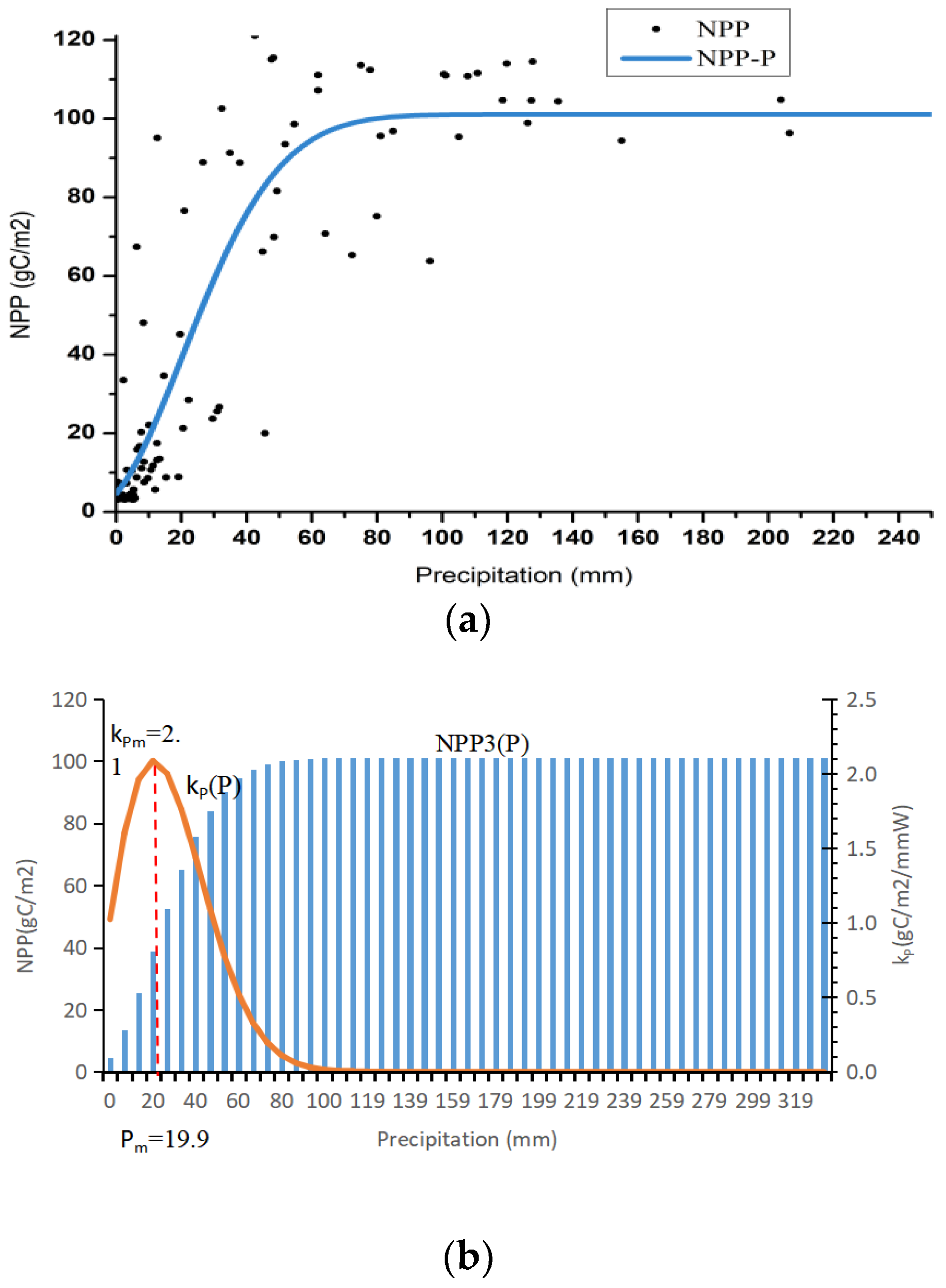
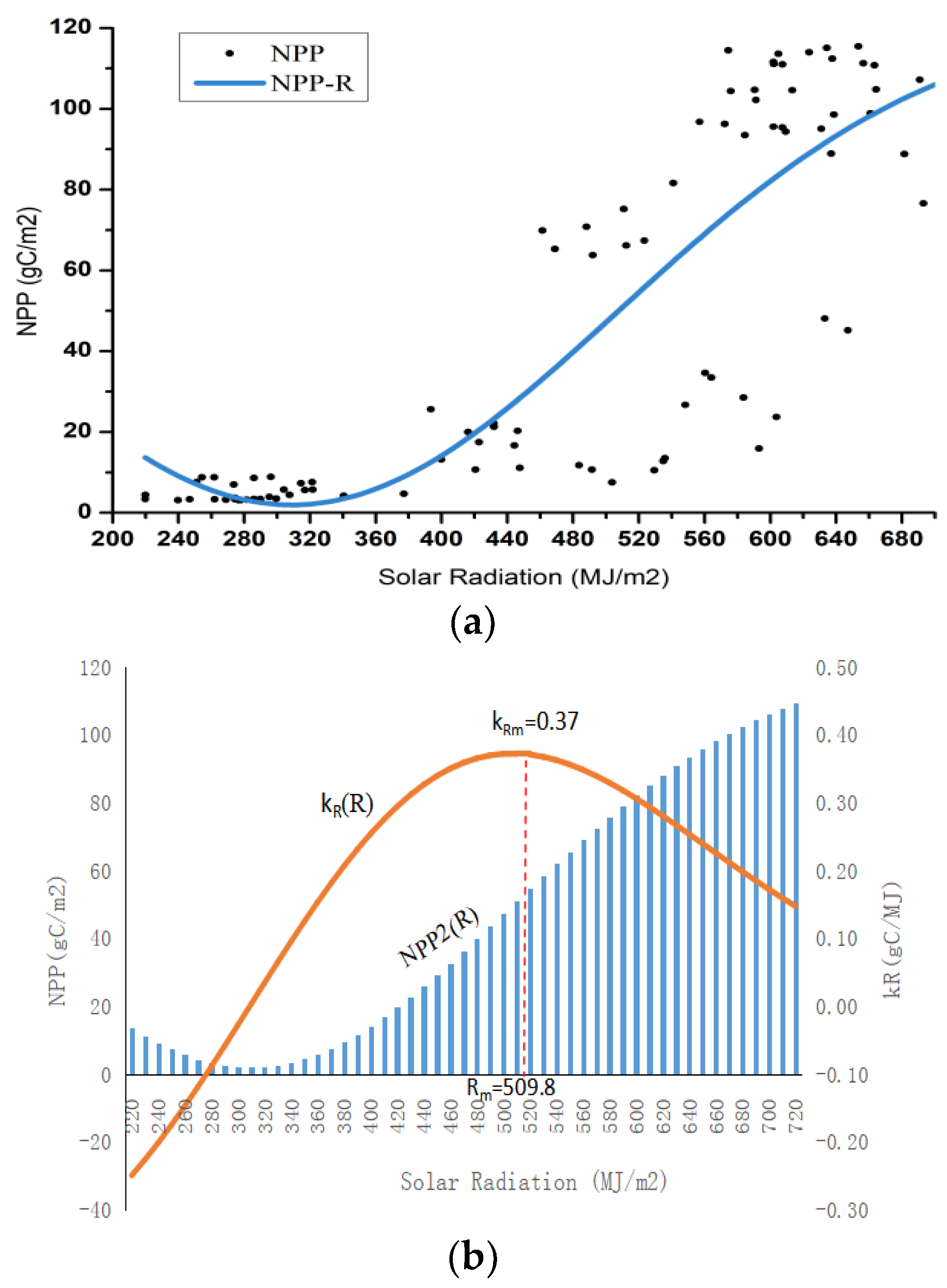
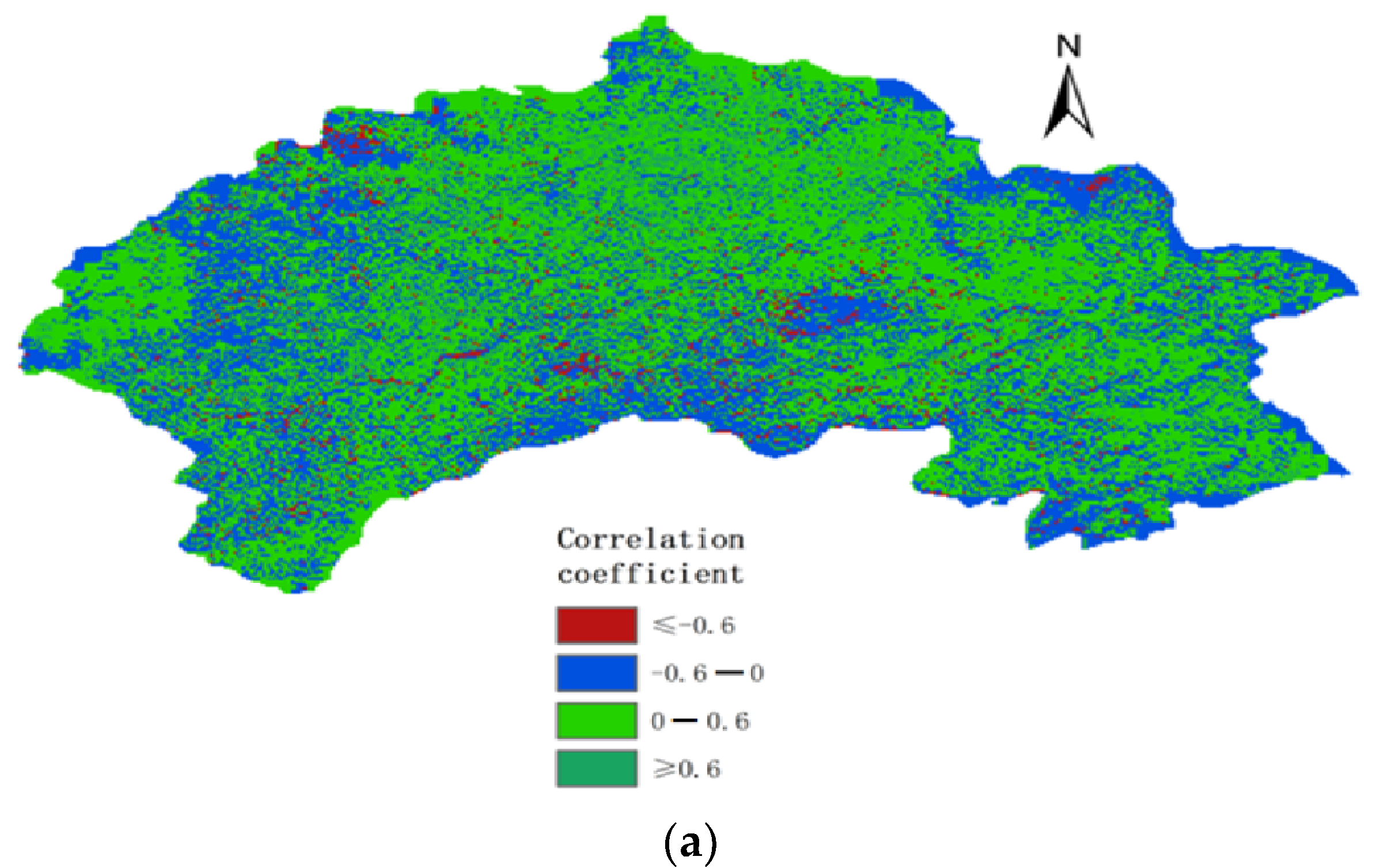
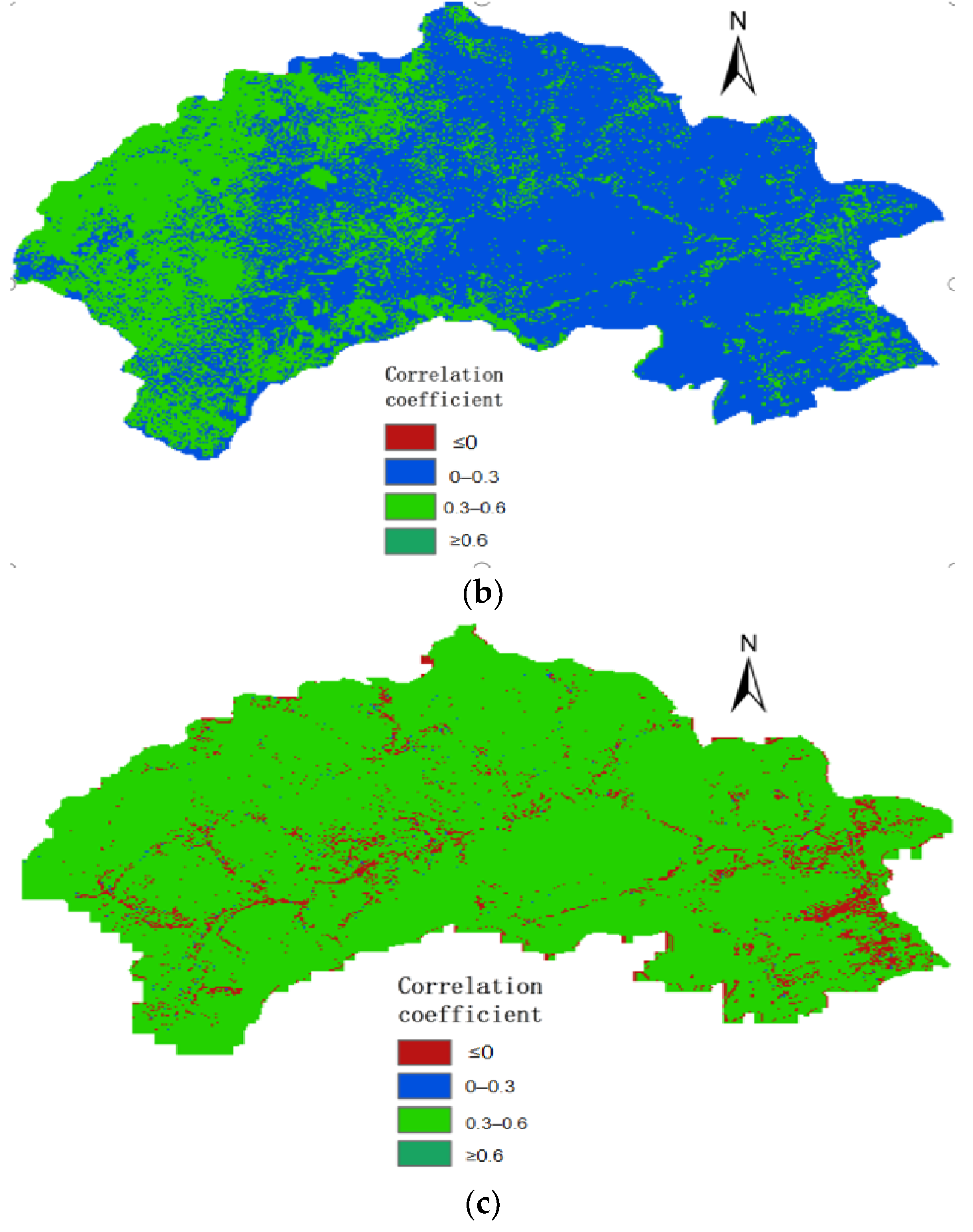
| Function/R2 | Boltzmann Function | Gaussian Function | Logistic Function | Sine Function | Exponential Function |
|---|---|---|---|---|---|
| NPP1 (T) | 0.98 | 0.95 | 0.04 | 0.96 | 0 |
| NPP2 (P) | 0.78 | 0.80 | 0.76 | 0.73 | 0.79 |
| NPP3 (R) | 0.73 | 0.75 | 0.73 | 0.72 | 0 |
| Year | (gC/m2) | (°C) | (mm) | (MJ/m2) | GSS (mm) | CP (kt) | ARC (kcny) |
|---|---|---|---|---|---|---|---|
| 2013 | 114.5 | 24.7 | 203.8 | 664.4 | 7.2 | 903 | 0 |
| 2014 | 114.0 | 26.7 | 119.8 | 693.1 | 16.8 | 898 | 3515 |
| 2015 | 111.6 | 24.8 | 110.8 | 716.7 | 18.1 | 933 | 0 |
| 2016 | 112.4 | 25.2 | 331.8 | 681.5 | 20.2 | 840 | 0 |
| 2017 | 110.8 | 25.4 | 206.5 | 719.7 | 21.5 | 933 | 7659 |
| 2018 | 111.5 | 25.8 | 155 | 653.6 | 45.7 | 1000 | 0 |
| 2019 | 115.1 | 25.9 | 84.9 | 690.9 | 48.5 | 361 | 7250 |
| 2020 | 121.1 | 25.7 | 127.3 | 647.2 | 30.2 | 0 | 0 |
| 2021 | 124.7 | 24.6 | 308.5 | 683.4 | 37.6 | 0 | 0 |
Publisher’s Note: MDPI stays neutral with regard to jurisdictional claims in published maps and institutional affiliations. |
© 2022 by the authors. Licensee MDPI, Basel, Switzerland. This article is an open access article distributed under the terms and conditions of the Creative Commons Attribution (CC BY) license (https://creativecommons.org/licenses/by/4.0/).
Share and Cite
Dai, L.; Zhang, Y.; Ding, R.; Yan, Y. Spatiotemporal Distribution and Influencing Factors of the Net Primary Productivity in the Datai Mine in Western Beijing. Sustainability 2022, 14, 15567. https://doi.org/10.3390/su142315567
Dai L, Zhang Y, Ding R, Yan Y. Spatiotemporal Distribution and Influencing Factors of the Net Primary Productivity in the Datai Mine in Western Beijing. Sustainability. 2022; 14(23):15567. https://doi.org/10.3390/su142315567
Chicago/Turabian StyleDai, Linda, Yongliang Zhang, Rijia Ding, and Yueguan Yan. 2022. "Spatiotemporal Distribution and Influencing Factors of the Net Primary Productivity in the Datai Mine in Western Beijing" Sustainability 14, no. 23: 15567. https://doi.org/10.3390/su142315567






